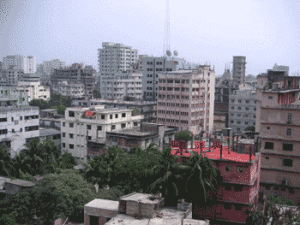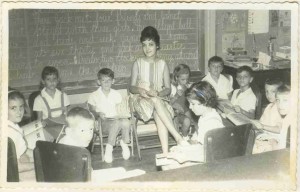Bangladesh is one of those countries that I had a chance to visit some years ago, but missed out on because of circumstances. With my love of Indian and Pakistani cultures, Bangladesh seems like a perfect place for me to teach. The school is mid-sized which allows for some variation in terms of interaction with students and teachers, while being small enough to get to know just about everybody. The salaries are well within the range offered in the region and are more than enough to live comfortably and save money as well. The salaries in Lahore during my years there were just about the same, and I was able to save over 40% of my salary and still support my family back in Bali.
 The American International School Dhaka was founded in 1972 and is located in a suburb of Dhaka. AISD is an independent, co-educational day school providing educational services for students from Pre-K through Grade 12. AIS/D is accredited by CIS and NEASC. The school is authorized to offer the IB PYP and IB Diploma programs. AISD has approximately 750 students from over 40 nationalities at AIS/D. Americans and Indians are the two largest nationalities represented.
The American International School Dhaka was founded in 1972 and is located in a suburb of Dhaka. AISD is an independent, co-educational day school providing educational services for students from Pre-K through Grade 12. AIS/D is accredited by CIS and NEASC. The school is authorized to offer the IB PYP and IB Diploma programs. AISD has approximately 750 students from over 40 nationalities at AIS/D. Americans and Indians are the two largest nationalities represented.
Mission
AISD provides a school environment that encourages students to reach their potentials and become life-long learners and responsible global citizens. The school is based on American educational principles.
Facilities
AISD has a 4.5-acre campus with 60 modern, air-conditioned classrooms. Among the facilities are: 2 libraries, 6 science labs, 2 gyms, 4 computer labs, art and music rooms, a cafeteria, athletic fields, a heated pool, 2 playgrounds, a student center and a clinic.
Curriculum
AISD offers students a college preparatory curriculum. It is an IB World School with authorization to offer the IB Diploma and PYP. The Middle School curriculum is inquiry-based. AISD has the traditional American structure with Elementary, Middle and High School divisions. The teaching philosophy and materials are similar to those found in excellent schools in the United States.
Extracurricular Activities
AISD offers a full after school activities program. Students are allowed to participate in up to four activities per week. Activities include drama, sports, computers, clubs, cooking and international trips for students in Grade 6 through 12.
Technology
The school has a strong technology program. Computer classes are taught from elementary through high school. AISD has 4 computer labs.
Professional Development
Teachers at AISD are expected to take part in professional development activities. Each teacher is allotted $1,200 per year which they may use for professional conferences, university course work, distance learning course work, and summer workshops. Additionally each division in the school has a PD budget which they can use for staff development activities.
Employment
The AISD website has a great teacher recruitment section with just about everything that a prospective teacher would want to know. AISD wants thoughtful and dynamic teachers who are willing to sponsor after school activities, value professional development and collaborate well with colleagues. Requirements include a Bachelor’s degree and certification. Initial contracts are for two years with yearly renewals based on performance. Teachers are expected to serve on at least one school committee and to sponsor an after school activity. Stipends are given for after school activities. Job openings are listed online.
AISD uses international job fairs as its primary means of teacher recruitment. They attend Search, ISS and Iowa job fairs. Personal interviews are required for employment so candidates are urged to attend one of the job fairs. Occasionally interviews can be arranged outside of the fairs. If you are interested in working at AISD, you should send an email to the school with the following: a cover letter; a list of references; and a resume. Send these to this address.
Salaries at AISD are in line with most mid-size schools in South and Southeast Asia. AISD uses a salary schedule which can be found online. Starting salary for teachers with 2 years experience is
$43,821 and the maximum starting salary is $62,974 for a teacher with 13 years experience and an MA +30. The school administration decides where a teacher starts on the salary schedule based on their previous experience.
AISD offers excellent benefits. These include: 10% of base salary relocation benefit, 10% of base salary pension benefit, medical insurance, disability insurance (school pays 75%, employee pays 25%), shipping at beginning and end of employment, travel at beginning and end of contract, R & R after first year round trip airfare to Bangkok, longevity bonus – $3,000 for extending first contract for additional two years; $1,000 for extension of one year after initial contract; one additional two year extension after first two year extension, annual home leave – after first two year contract, transportation in Dhaka, housing along with major appliances, furnishing allowance – $300, utilities – up to $3,500 per year for gas, water, and electricity, fee waivers for children of teachers, medical examination, immunizations, emergency evacuation, holiday leave for regular school holidays, sick leave – 15 days per year, personal leave – 2 days per year with pay, recruitment leave – 3 days with pay when leaving AISD, severance – reimbursement of 60 days accumulated sick leave not used at $25 per day, maternity leave – 60 days, paternity leave – 8 days, sabbatical leave – after six years, one year at half pay, but must return for two more years, bereavement – 10 working days for serious illness of family member and taxes – teachers are exempt from Bangladeshi income taxes.
About Dhaka
Dhaka is the capital of Bangladesh, the country formed from what was previously called East Pakistan and before that was in the Bengal part of British India. It has a population of around 11,000,000 including the metropolitan area. Dhaka has all the problems that go along with being the 11th most populous metropolitan area of the world, but it does attract a fair amount of foreign investment and is the center of education in Bangladesh. Bengali is the national language and most residents of Dhaka speak Bengali or one of its dialects. English is also spoken by many residents especially in business establishments. The majority of Dhaka’s residents are Muslims although there are Hindu, Buddhist and Christian communities as well. While there are many traditional markets left in Dhaka, the rising middle and upper classes usually shop at the new malls being built around the metropolitan area. Dhaka has an active cultural scene, and if you’ve been to Pakistan or India, you’ll recognize many of the foods, dances and music.

 The main teaching fairs are run by International Schools Services, Search Associates, the European Council of International Schools, and Northern Iowa. I only have experience with ISS and at that I only attended one fair in 1989. Fairs are usually quite crowded; teaching couples have an edge generally on single teachers as they can split up and cover twice the ground. Single parents are at an extreme disadvantage when looking for jobs overseas. Even singles without children are not hired by some schools. A lot of this has to do with housing considerations. You can find specific information on each of the organizations mentioned above on their web sites along with online forms that you can fill out or download. One other site that you may want to consult in your search for teaching positions is TIE – The International Educator. TIE publishes a newspaper that has job listings as well as articles about teaching overseas. You can also use their online services.
The main teaching fairs are run by International Schools Services, Search Associates, the European Council of International Schools, and Northern Iowa. I only have experience with ISS and at that I only attended one fair in 1989. Fairs are usually quite crowded; teaching couples have an edge generally on single teachers as they can split up and cover twice the ground. Single parents are at an extreme disadvantage when looking for jobs overseas. Even singles without children are not hired by some schools. A lot of this has to do with housing considerations. You can find specific information on each of the organizations mentioned above on their web sites along with online forms that you can fill out or download. One other site that you may want to consult in your search for teaching positions is TIE – The International Educator. TIE publishes a newspaper that has job listings as well as articles about teaching overseas. You can also use their online services.